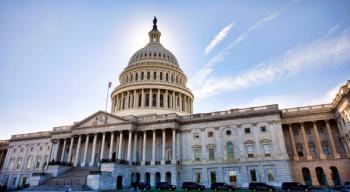
Obama backs cuts in Medicare drug payments
The president’s proposal to cut Medicare drug payments sets off a firestorm.
President Obama did not say much about health reform in last month’s State of the Union address. He reiterated his opposition to major changes in Medicare benefits or program structure and offered three options for cutting costs: higher premiums for wealthier seniors; greater use of pay-for-performance reimbursement strategies; and reducing “taxpayer subsidies to prescription drug companies.”
The last proposal has set off a firestorm, pitting Democrats and consumer advocates against drug companies. The change requires drug companies to pay rebates on medicines provided by Medicare plans to “dual eligibles” who previously received prescription drugs through state Medicaid plans, which already collect rebates. Savings to Medicare are projected at $150 billion over 10 years.
Pharmaceutical companies struck back, blasting the president’s “radical proposal” as imposing price controls on Part D. The Pharmaceutical Research and Manufacturers of America claimed that drug plans save money for Medicare by negotiating lower prices, and tampering with the program would lead to higher premiums and reduced access to medicines.
Consumer advocates have launched a counterattack with a report predicting even greater savings by scrapping private Part D plans altogether. The Center for Economic and Policy Research (CEPR) calculates that taxpayers would save $541 billion by 2022 by having the government negotiate prices as it does for hospitals and providers.
The idea has some traction among healthcare providers as preferable to more cuts in Medicare reimbursement for hospitals and doctors. Canada, Europe and other countries spend much less on prescription drugs than the United States says CEPR, because their governments negotiate drug prices.
Although most Republicans back the market-based Part D program, there is broad consumer support for requiring drug companies to give the federal government “a better deal on medications for low-income people on Medicare.” A survey (January 2013) sponsored by the Kaiser Family Foundation, the Robert Wood Johnson Foundation and the Harvard School of Public Health found that nearly 70% of respondents backed this strategy, including 61% of Republicans who “strongly favor” savings from lower-cost meds.
The debate is sure to prompt more analysis of Part D outlays and savings. While the program has proven less costly than predicted by the Congressional Budget Office, the savings come largely from lower-than-expected enrollment and higher utilization of generic drugs. Private plans get some credit for encouraging generic utilization, but there’s debate over whether plans can negotiate the best prices from drug companies.
NEW FACES
The task of addressing these issues will fall to some new faces, as long-time administration officials step down. Carolyn Clancy, director of the Agency for Healthcare Research and Quality, is leaving after more than 10 years.
The Centers for Medicare and Medicaid Services (CMS) is losing Richard Foster, its top financial advisor and chief actuary since 1995. Having a leader at CMS after years of Congressional inaction will also be a big change. After over a year as acting administrator, the White House has renominated Marilyn Tavenner and there are signs the Senate could act on the request. MHE
Newsletter
Get the latest industry news, event updates, and more from Managed healthcare Executive.






















































